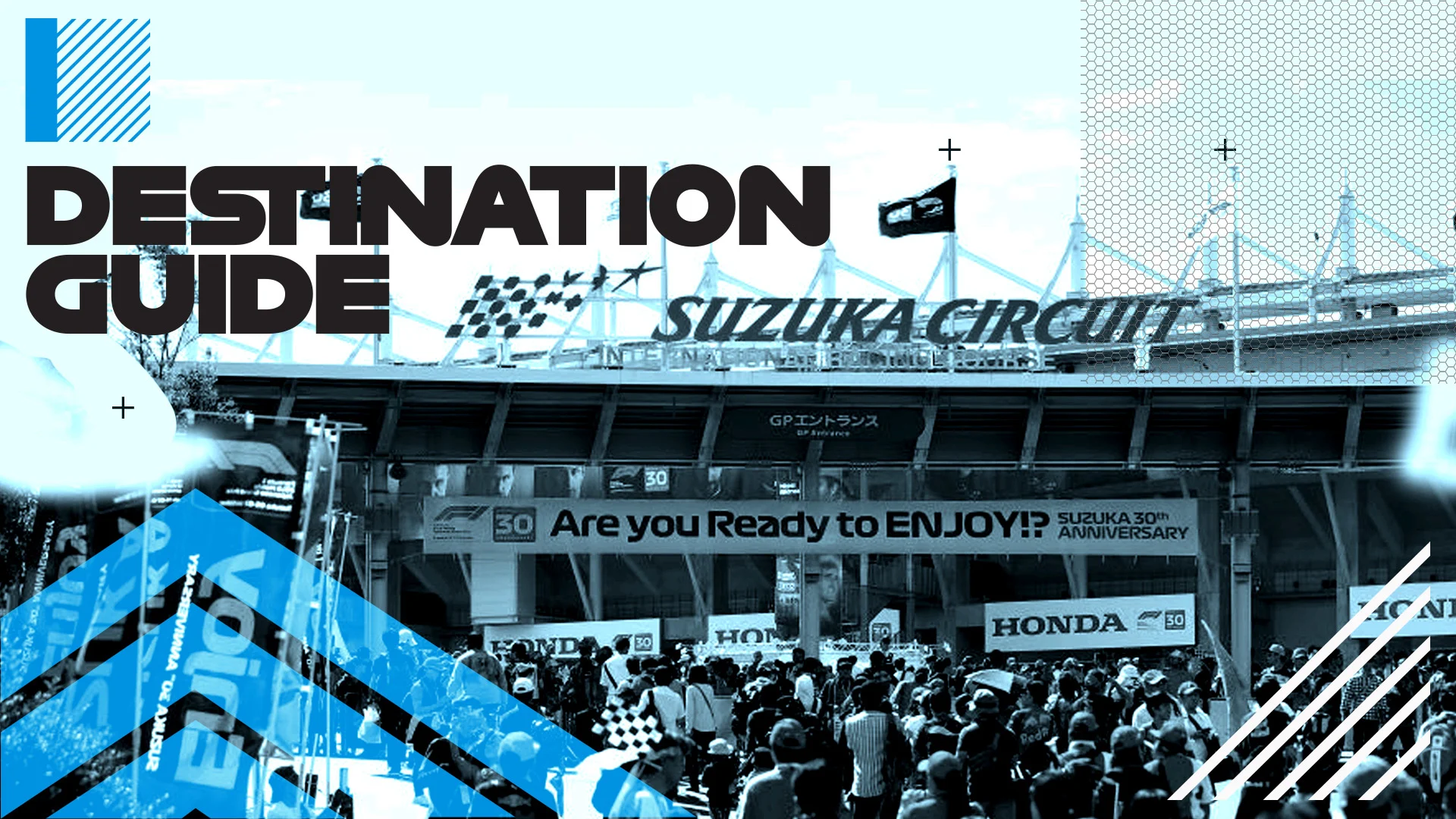Suzuka Circuit is a rare beast – a track universally adored by racing drivers of all disciplines. Built in 1962 and designed as a test track for the Honda car company, Suzuka is a relative newcomer to the F1 calendar having joined in 1987, but it quickly established itself as a favourite among the drivers as this high-speed track presents one of the ultimate challenges for those lucky enough to grace its asphalt.
Throw in some legendary F1 moments featuring some of the sport’s greatest rivalries, a truly unique set of fans, and incredible food and culture, and Suzuka should be at the top of every F1 fan’s bucket list.
For RB’s Japanese racer Yuki Tsunoda, Suzuka is a special place. “I really love the track, I’ve driven there a lot – more than 10,000 laps and I never get bored of it!” he says.
"I love the layout because it’s really challenging. You feel that when you’re driving fast there, you’re able to maximise the performance of the car… you can feel the car and how it behaves."
Racing in front of his home fans also reminds Tsunoda how much support he has.
"Normally I don’t feel like I’m a Japanese driver when I’m living outside of Japan and travelling, but I go to Suzuka and feel the support from the fans and see it in their eyes – I think ‘ah, I’m a Japanese driver!’ and I’m honoured to be. It feels like coming home."
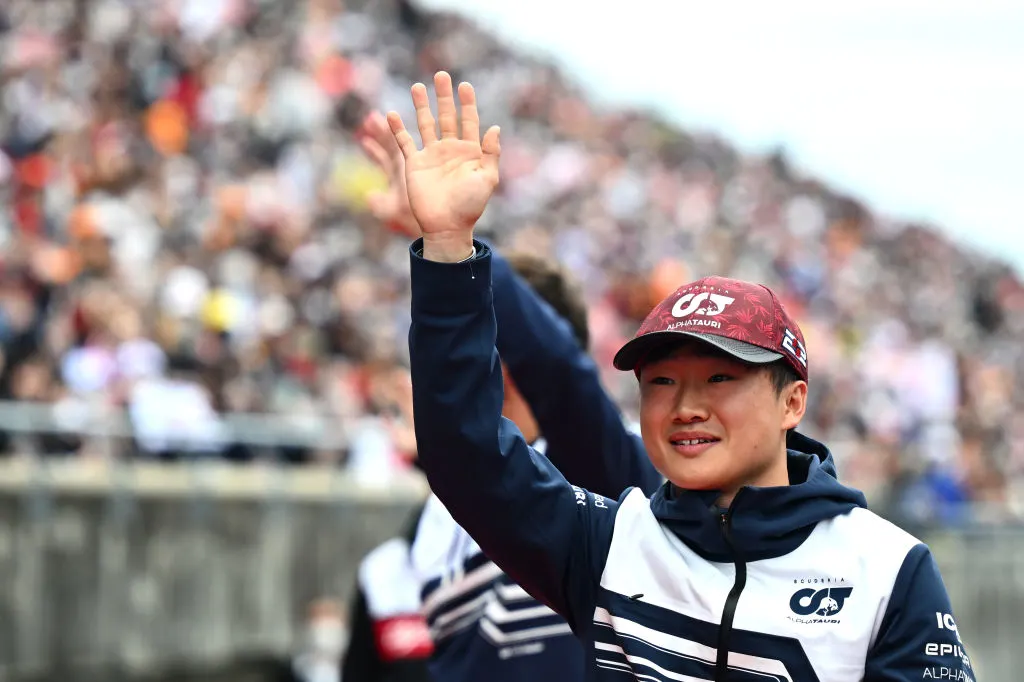
Team Principal of the Haas F1 team, Tokyo-born Ayao Komatsu, cites his first memory of watching the iconic Prost vs Senna battles at Suzuka unfold on TV as the reason he got into F1 – but created his own personal favourite memory of the track in 2013 when working as Romain Grosjean’s engineer.
"Romain qualified fourth for the race and had an amazing start - he was leading into turn one against the much quicker Red Bulls of Sebastian Vettel and Mark Webber.
READ MORE: Everything you need to know about F1 – Drivers, teams, cars, circuits and more
"Ok, we didn’t win that race – we came third in the end – but to lead half of the race was very special."
He adds: "Suzuka is one of the most challenging tracks for a driver, but also for the teams when it comes to setting up the car – that’s what makes it so special."
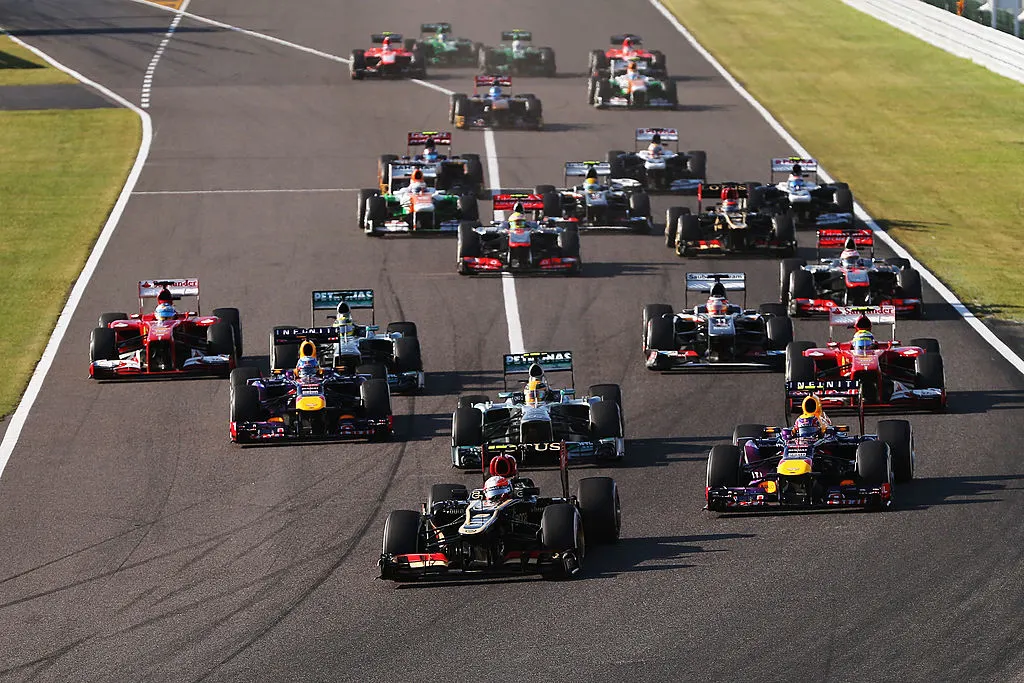
What to eat
Visiting Japan for the first time can be a daunting experience, and never more so than when navigating the many different delicious culinary options illustrated on restaurant menus – and while the universally recognised sushi is indeed prevalent, Japanese cuisine is made up of so much more.
Sushi is of course something that everyone associates with Japan and is one of the most popular things to eat in every part of the country. Tsunoda is a big fan.
“The food in Japan in general is amazing, but especially when you eat sushi. It’s a lot different to when you eat it outside Japan – everyone should try it!”
READ MORE: The beginner’s guide to the F1 weekend
It is thought that sushi was introduced to Japan in the eighth century, and the word ‘sushi’ referred to pickled fish preserved in vinegar, allowing it to be stored for a few months.
Nowadays sushi exists in countless variations and forms, from slices of raw fish and seafood served without rice (sashimi) to traditional fermented sushi (nare-zushi), and sushi chefs typically spend a decade honing their intricate craft which makes visiting a Japanese sushi restaurant an experience not to be missed.
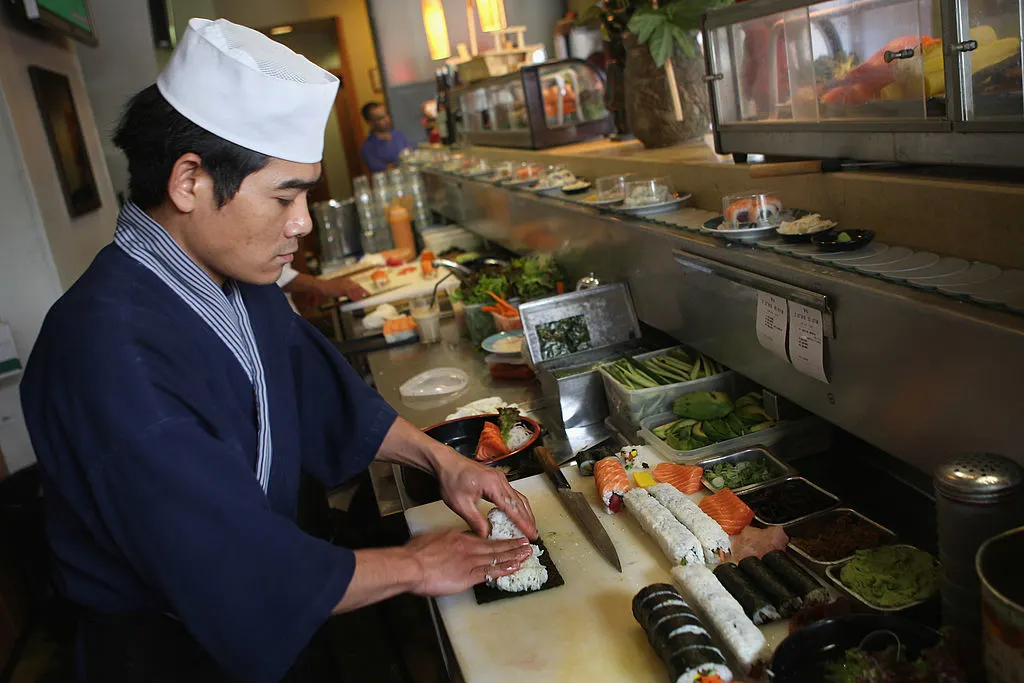
“Japan has got so many delicious specialties when it comes to food,” says Komatsu. “Japanese BBQ – Yakiniku (which means grilled meat) – is amazing because of the high quality of the meat in Japan. You must try it!”
Yakitori are grilled chicken skewers cooked over charcoal to give them a distinctive smokiness and are best enjoyed with a glass of cold beer with friends. The very best yakitori are served at specialty restaurants known as yakitori-ya, but they can also be found on most restaurant menus.
One of the most popular types of yakitori are Negima, where pieces of succulent chicken thigh alternate with chunks of charred leek. But for the ultimate umami hit, try Torikawa which is chicken skin grilled until deliciously crispy.
READ MORE: The beginner’s guide to the F1 calendar
For when you are in need of a comforting hug-in-a-bowl kind of dish, look no further than ramen – Japanese noodle soup characterised by the unique chewy wheat noodles and rich, savoury broth guaranteed to soothe the most frazzled of souls. There are typically four main styles of ramen: shoyu, miso, tonkotsu and shio – and it's the first thing that Komatsu craves when he returns to his homeland.
“The dish I have to have when I go back to Japan is ramen,” he says. “It’s now very popular in the UK, but when you try ramen in Japan you will see the quality of the ingredients.”
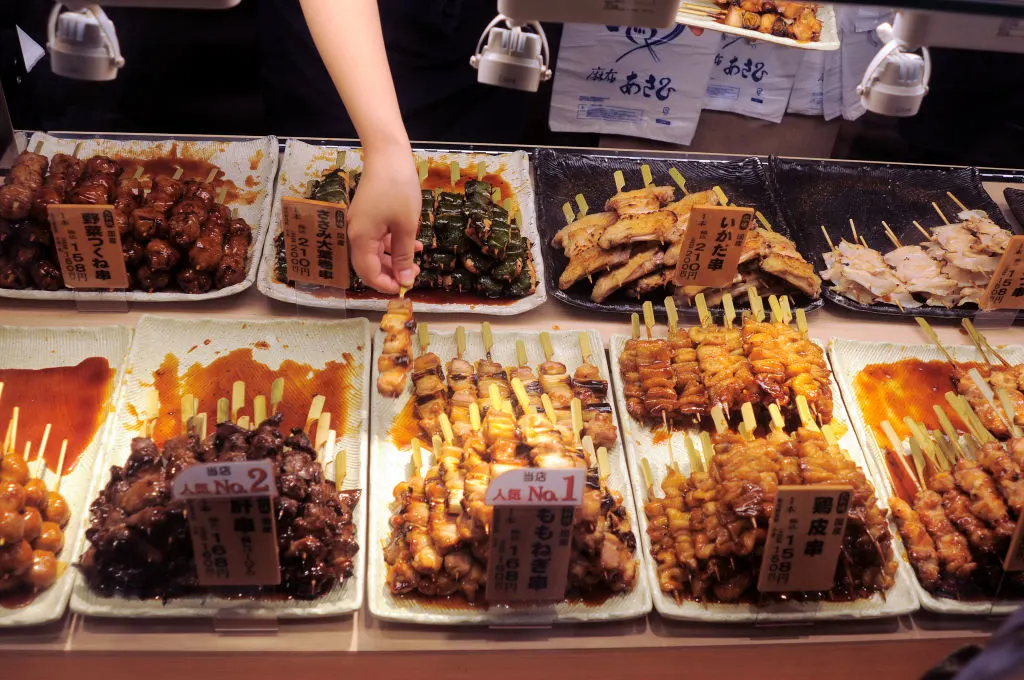
Most countries have a version of fried chicken and Japan is no exception. Karaage chicken is a popular late night food and has a deliciously crispy coating (thanks to the use of potato or corn starch in place of flour when coating the chicken pieces) and remains juicy inside after deep frying.
The chicken is usually marinated first in soy sauce and mirin (Japanese sweet rice vinegar) before being rolled in the coating and fried, giving it that unique Japanese flavour twist. Best eaten with your fingers.
TREMAYNE: From Senna vs Prost to 130R – why Suzuka is so special for F1 fans everywhere
For Tsunoda, the first thing he eats when he returns to Japan depends on how he is feeling but sukiyaki usually features high on the list. “Sukiyaki is a type of hot pot and has soy sauce in it and is delicious with wagyu beef in it. You should definitely try it if you can.”
As for favourite restaurants in Suzuka, he’s a little more coy.
“There’s a Japanese BBQ restaurant that I always go to and have been going since I was driving Formula 4 from 2015. It’s nice and feels like home, I took my engineers there last year and they loved it. You get proper wagyu beef there. I won’t say the name because I go there a lot!”
Ah well.

Where to stay
Whilst Japanese hotel rooms are traditionally very small, they are perfectly formed and have distinct characteristics not found elsewhere. Beds are small, pillows are usually soft on one side and filled with rice on the other, and if you’re lucky enough to have a bathtub it will be very small and very deep.
For something more authentic, try a ryokan (Japanese Inn) with futon beds on the floor and paper screens and tatami mats for a different hotel experience. Whilst Suzuka City itself is well served by hotels, other options abound with the bustling and vibrant city of Nagoya situated approximately 40 miles from the track with a regular – and as you might expect – efficient train service.
WATCH: Japanese Grand Prix – 5 great battles from the F1 archive
With its many temples and shrines – and stunning castle – Nagoya is an excellent place to base yourself during Grand Prix week. Alternatively, the slightly closer small port city of Yokkaichi is located just 13km from the track and has many hotel options, a lively nightlife and is well connected by trains to Suzuka and Nagoya.
Where to watch the race
There is no shortage of great vantage points around this iconic track, but a good place to start is Grandstand I which affords you a view of the incident-attracting hairpin and hopefully some overtaking.
Alternatively, to watch downforce and commitment working together in perfect harmony on the ‘S’ Curves, then Grandstands D and E are the places to be. But for a real treat, bag yourself a spot in the left flank of Grandstand G which places you at the inside of 130R.
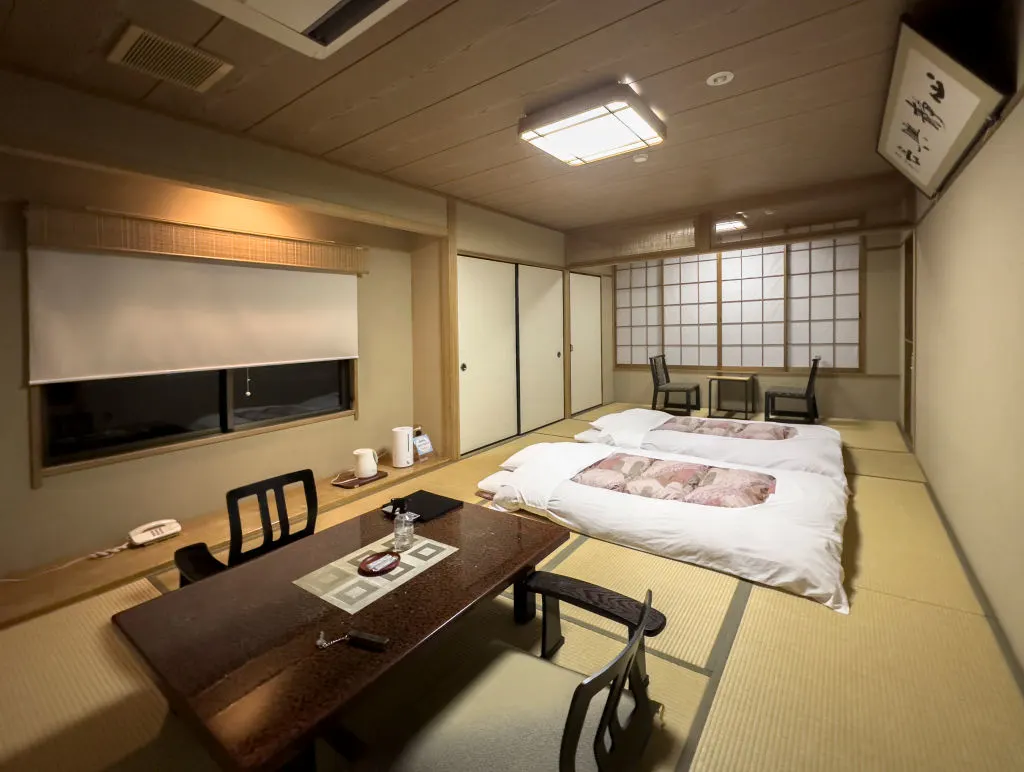
Non-F1 highlights
Although it used to occupy a late season slot on the F1 calendar, this year the Japanese Grand Prix takes place in early April meaning that it corresponds beautifully with the peak of one of the most eagerly anticipated natural events in Japan – cherry blossom season.
Such is the fervour surrounding this time of year that the Japanese have a word for the act of observing the delicate blooms: Hanami – meaning to enjoy the fleeting beauty of the flowers.
GALLERY: Check out the best images from the F1 Tokyo Festival
“Cherry blossom (Sakura) is the Japanese national flower, and cherry blossom season always corresponds with celebrations and graduations," explains Komatsu.
"It’s very popular for people to picnic in the park under the blossom both during the day, and at night – it’s a typical image of Japan. I haven’t seen it myself for 30 years, so I’m really looking forward to seeing that!”
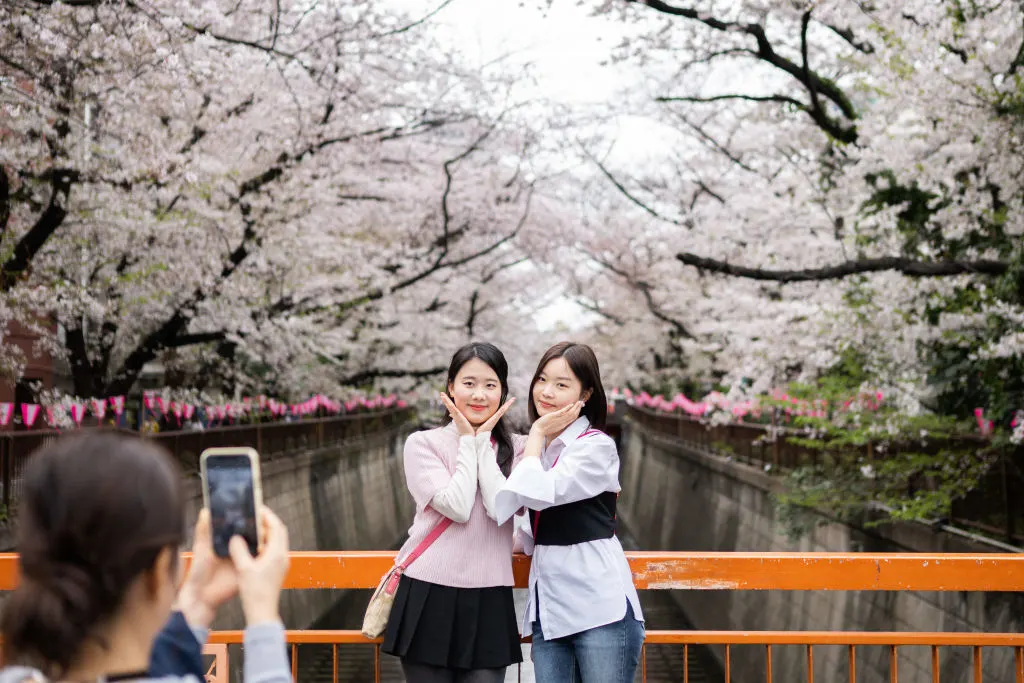
Rising 50 metres high above the circuit, the iconic Ferris wheel at Suzuka is well worth a ride when you’re at the track. Situated just after the last corner and with views over the whole track, and as far as Ise Bay and the Pacific Ocean beyond, it’s a great way to take in the sights without leaving the circuit.
Once you’ve hopped off the Ferris wheel, head to the Suzuka Circuit amusement park, Motopia, for some fun for the whole family. With rides that are all vehicle themed, petrol heads of all ages can get competitive on the karting track or tackle the Acro-X Evolution – a bumpy road incorporating 12 different challenges, such as the extreme hill climb and water cannon.
With hot springs open in the winter and plenty of food outlets, it’s the perfect place to relax and have fun after a day at the track.
Nearby Nagoya is the fourth largest city in Japan and a great place to explore, with many shrines, temples and of course the famous Nagoya Castle. This beautiful and imposing structure was completed in 1615 by the Shogun, Tokugawa Ieyasu.
It is of such historical importance that it became the first castle in Japan to be designated a National Historic Site, and with its tower keep topped with golden Shachihoko tiger-fish ornaments, the castle emphasises the sheer might the Tokugawa clan had during the Edo period. Sadly it was heavily damaged during WWII air raids, but extensive restoration work has returned this glorious castle to its original condition.
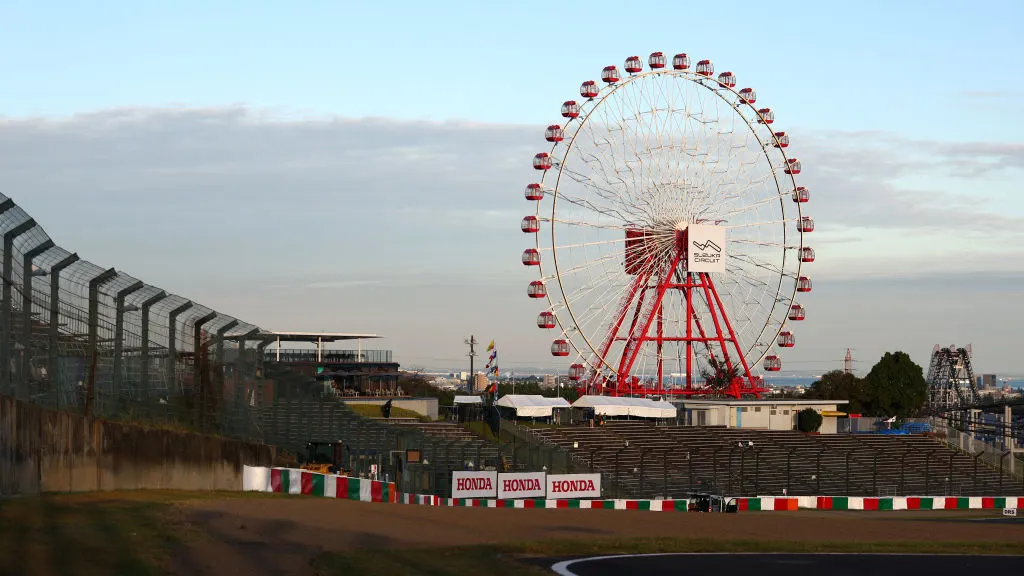
No visit to Japan should be without a trip to the capital Tokyo, a dazzling metropolis with a population of over 37 million people, approximately a four hour train journey from Suzuka. And the very best way to get there is by Bullet Train.
Japan’s gleaming symbol of technological development, the Shinkansen trains are the fastest way to get around the country at ground level. Reaching top speeds in excess of 320km per hour and linking Japan’s major cities since 1964, a ride on a Shinkansen is not to be missed.
TREMAYNE: How Senna helped Damon Hill seal the finest win of his career
When buying your ticket for the Shinkansen to Tokyo, be sure to ask for a window seat on the Mount Fuji side of the train, and if you are very lucky and have clear weather, you will be rewarded with a spectacular view of this most majestic of mountains as you whizz by at speed to the big city.
It's almost impossible to comprehend the sprawling vastness of Tokyo which is essentially a collection of small cities within a city, each with their own distinct character.
A good way to get your bearings is to take in the view from the top of the Tokyo Metropolitan Government Building which is completely free of charge and will give you a 360-degree vantage point of the city.
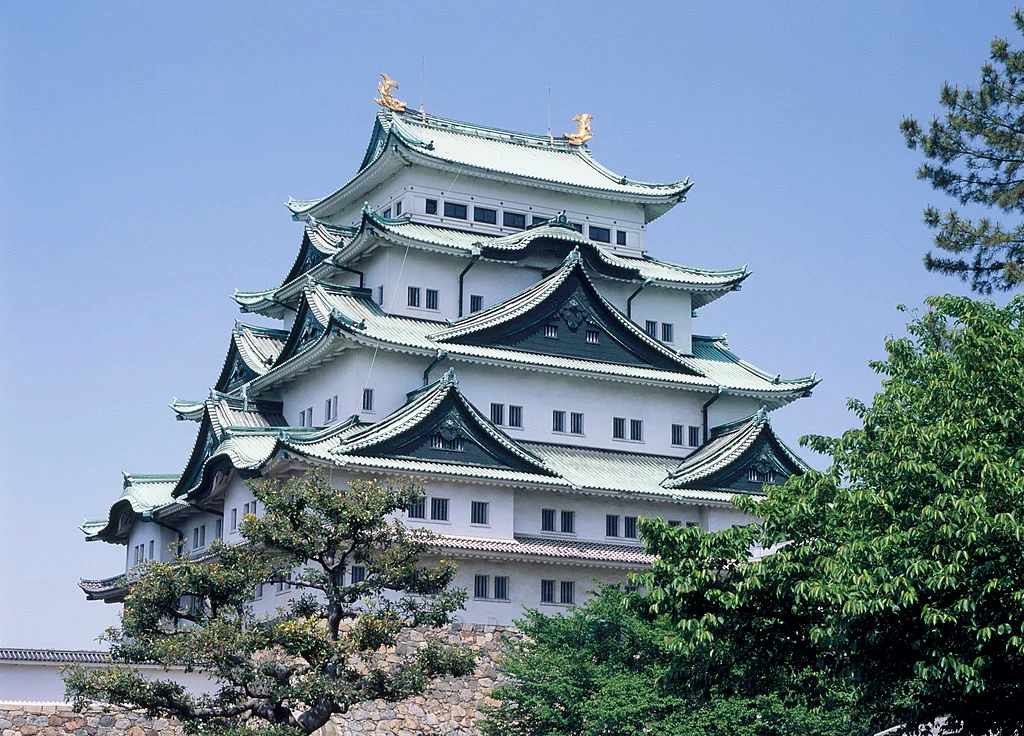
The best time to go is at dusk as the sun is setting on the horizon, for (hopefully) another glimpse of Mount Fuji silhouetted against the orange glow, before the characteristic blinking red lights of the city’s skyscrapers transform the landscape below into a futuristic scene which seemingly has no end point.
“Growing up in Tokyo certainly wasn’t boring,” laughs Komatsu. “I didn’t live in the centre but in a suburb of the city – Tokyo has so many different areas all with very different atmospheres, and so it was an exciting place to grow up.”
And if he were to sum up his hometown in just three words? “I’d say vibrant, sleepless (it NEVER sleeps) and just a mega big cosmopolitan city. Sorry, that’s definitely not three words!”
READ MORE: Traffic lights, tacos and moustaches – Getting to know the real Yuki Tsunoda
Warm up those vocal chords, cast off those inhibitions and spend an enjoyable hour or two indulging in the popular cultural pastime of karaoke. With many venues in Tokyo and indeed the rest of Japan, you can enjoy drinks and bar snacks all served in the comfort of your own private karaoke booth, meaning you can belt out Beyonce to your heart’s content without an audience.
Get swept along with hundreds of people at possibly the most famous pedestrian crossing in the world, Shibuya Crossing. At peak times, this junction in the popular entertainment district of Shibuya sees up to 2,500 people patiently wait for the green signal to cross the road in five different directions over the distinctive black and white stripes beneath their feet.
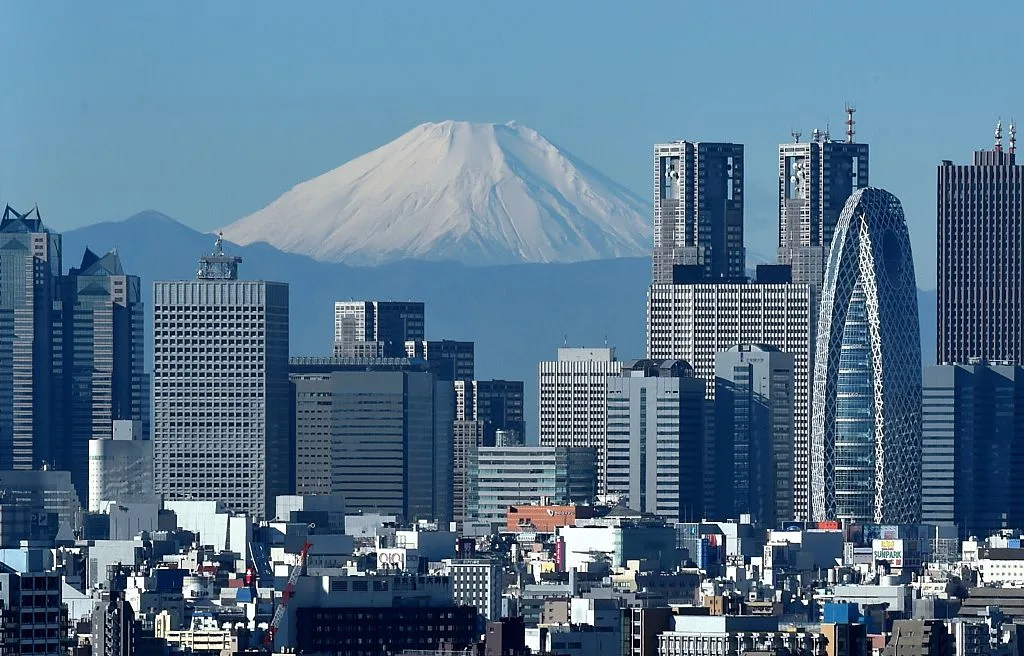
Once you’ve joined the hordes and crossed yourself, head upstairs to one of the buildings which offer crossing viewing points, where for a few yen you can look down on the mesmerising spectacle below.
Despite its quirky and futuristic reputation, Tokyo maintains an air of its historic cultural origins from its former life when it was named Edo, and you don’t have to travel very far in the city to discover a taste of the old city.
One such area is Asakusa where the ancient Buddhist Senso-ji Temple is located alongside a stunning five storey crimson and gold pagoda. Completed in the year 645, Senso-ji is Tokyo’s oldest temple and one of the city’s most popular and atmospheric attractions with trails of incense wafting over the estimated 30 million people that visit this historic site each year.
READ MORE: Formula 1 to race in Japan until 2029 after new five-year extension
Channel your inner Bill Murray and Scarlett Johansson from the cult Oscar winning film set in Tokyo, Lost in Translation, and enjoy a glass of something cold whilst being entertained by a live jazz performance in the glamorous New York bar located on the 52nd floor of the Park Hyatt hotel in Shinjuku.
Opened in 1994, this luxurious hotel has been the accommodation of choice for visiting celebrities and film director Sofia Coppola loved it so much that she made it the centrepiece of her quirky movie.
Golden Gai in Shinjuku is made up of six alleyways, where a collection of tightly packed and mismatched independent bars and restaurants, all with unique characters line the narrow streets. Some only have room for a few seats, but with over 200 to choose from and with many buildings housing more than one bar you’re bound to find just the spot to enjoy a charming area of Tokyo which has managed to remain unpolished.
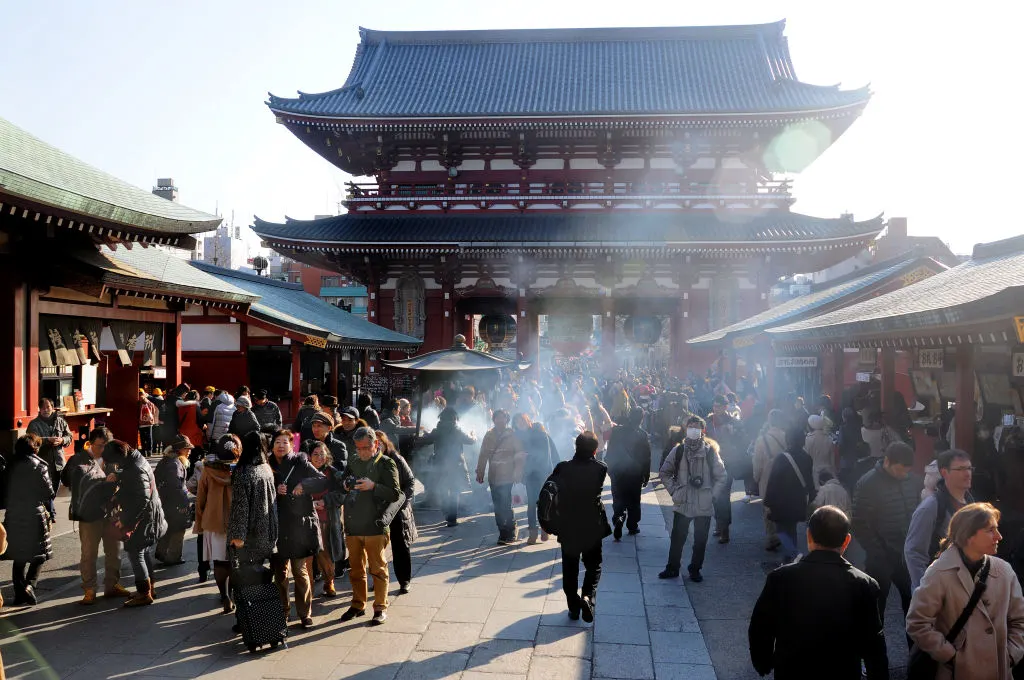
There are approximately 25,000 hot spring sources in Japan, and over 3,000 onsen with bathing facilities, where you can enjoy the health benefits of these warm, mineral rich waters.
There are many different types of onsen – some are outdoors and you can buy a day pass to use them, and some can be found in onsen ryokan inns which have their own hot spring. You can usually only access these when you book an overnight stay, although some will offer day access to visitors.
READ MORE: How sustainable fuels can benefit the world – and are more than just the future of F1
Japanese bathing is all about relaxation, and therefore it is customary to wash your body first in an area equipped with hand held showers and bowls to rinse yourself with, before entering the onsen to enjoy the steaming, healing waters.
When asked what he misses about his homeland while living in the UK, Komatsu doesn’t hesitate. “I miss the onsen, the natural hot spas – Japan has so many volcanoes and the onsen are amazing, I miss that. And the mountains!”
With its passionate and knowledgeable fans, incredible hospitality, diverse and delicious food culture, and the bright lights of Tokyo a few hours away, Suzuka is a destination like no other.
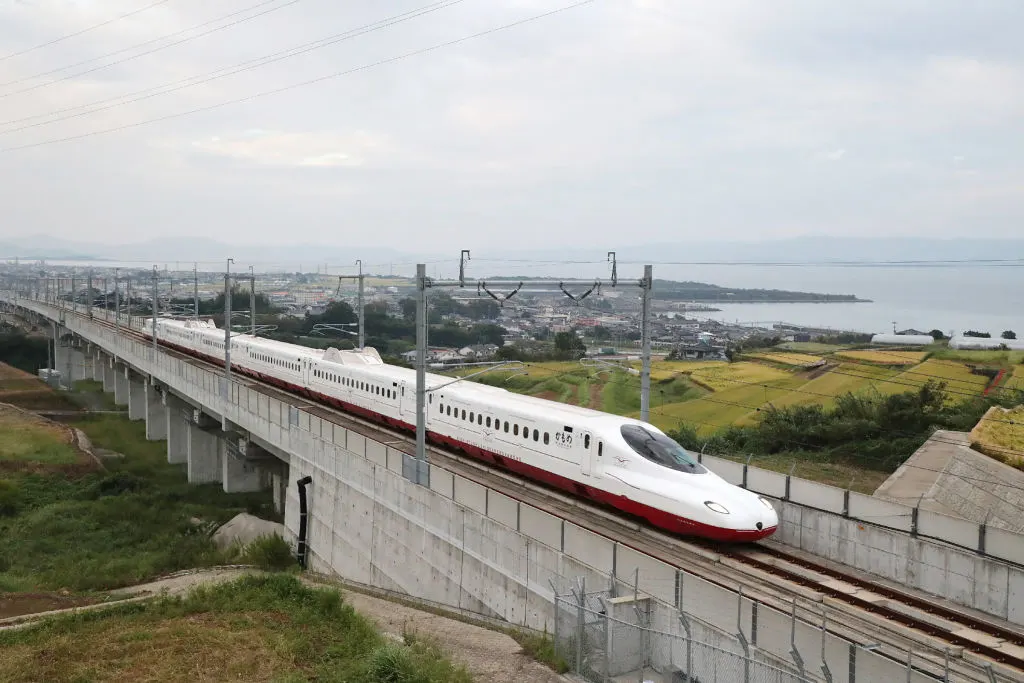
Not many people visit Japan and leave without falling head over in heels in love with the country, and for F1 drivers and team personnel alike, it is one of the most eagerly anticipated race weeks on the calendar.
If Tsunoda had to sum up Suzuka in one word?
“I would say creative – the fans who come with the DRS helmets, no other country’s fans do that. The fans are so passionate about motorsports and they know a lot, especially about the Senna and Prost times. They also love to support all drivers, not just me – it’s definitely very special.”
Komatsu agrees. “The fans just know a lot about the sport, and the fact they make so much effort dressing up and putting rear wings on helmets etc, it just creates a very special atmosphere – it’s unique.”
Fun fact
When the time comes to leave Japan and you’re sat in your seat on the plane, be sure to take a look out of the window towards the terminal building after the aircraft has pushed back from its stand and is making its way to the runway.
You will see the ground staff who have serviced the plane all standing in a line, smilingly waving you off until the very last window has passed them when they will then bow to the aircraft before going about the rest of their day.
This wonderful gesture is both a sign of respect and thanks to the passengers onboard the aircraft and is the last lovely act of hospitality you will see before leaving this warm and generous country.
Japan at a glance
- Currency: Japanese Yen
- Language: Japanese
- Population: 123m
- First F1 race: 1976
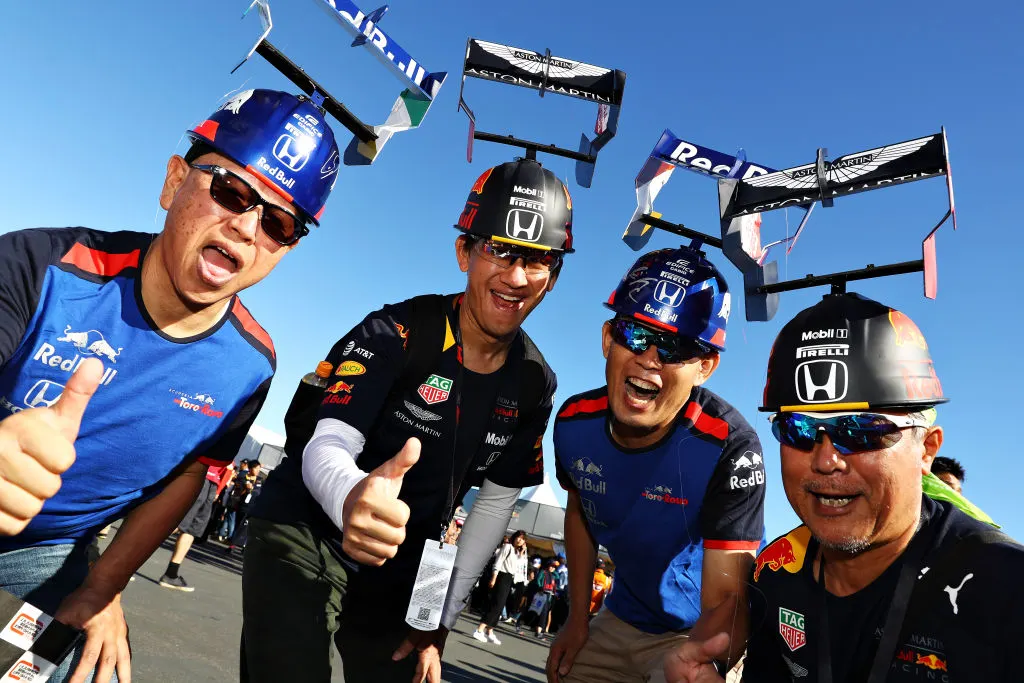
Next Up
Related Articles
 ExclusiveWhy Gasly feels ‘ready for my time’ in F1
ExclusiveWhy Gasly feels ‘ready for my time’ in F1 The elite group Norris joins as McLaren World Champion
The elite group Norris joins as McLaren World Champion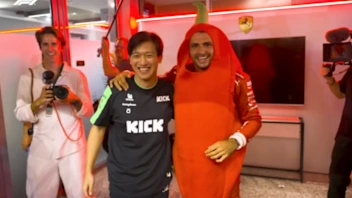 The best moments from F1 Secret Santa over the years
The best moments from F1 Secret Santa over the years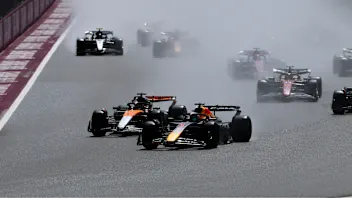 REVEALED: Your favourite race of the 2025 season
REVEALED: Your favourite race of the 2025 season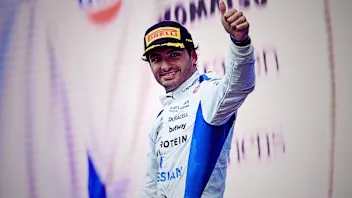 ExclusiveWhy Sainz feels ‘vindicated’ after his first Williams year
ExclusiveWhy Sainz feels ‘vindicated’ after his first Williams year F1 CEO Domenicali reflects on 'phenomenal' 2025
F1 CEO Domenicali reflects on 'phenomenal' 2025
